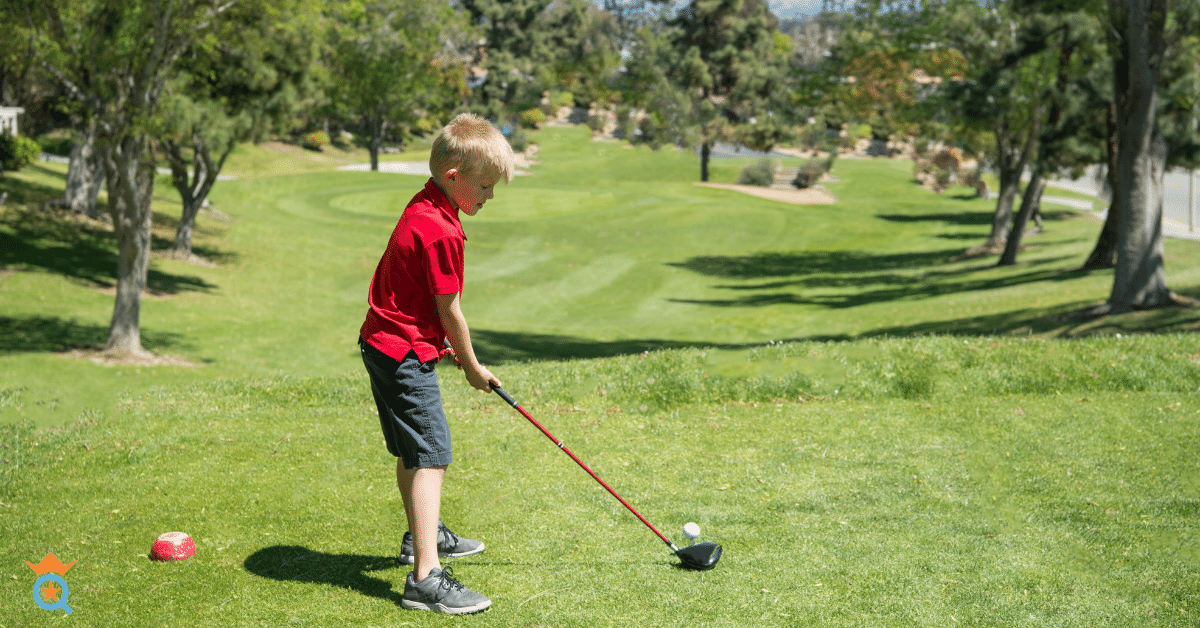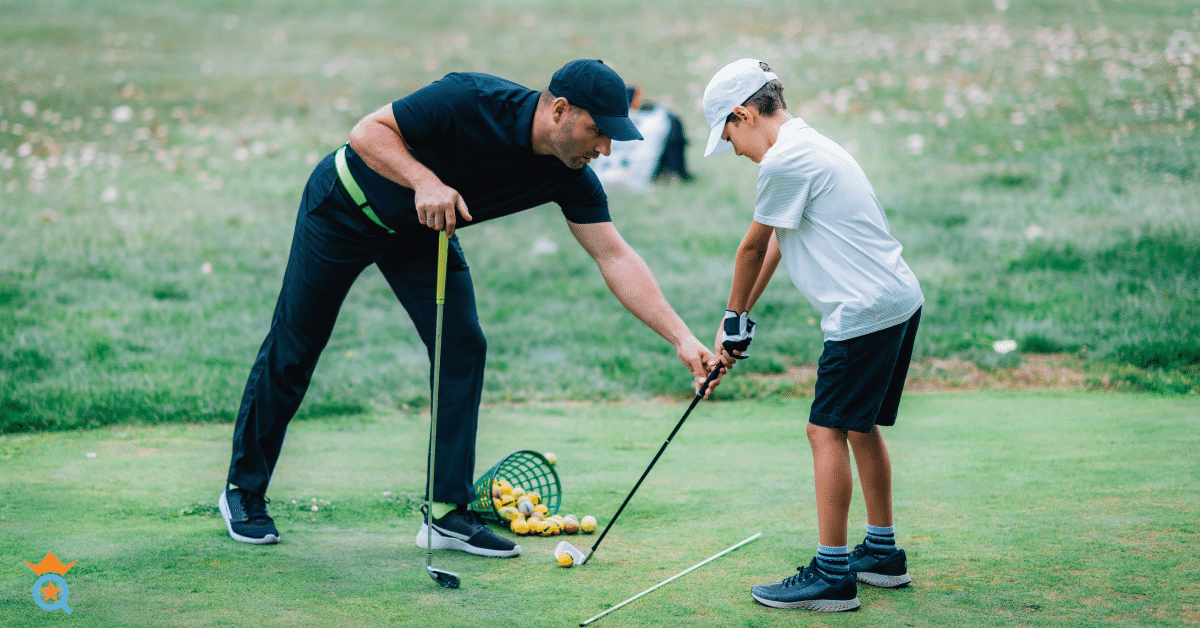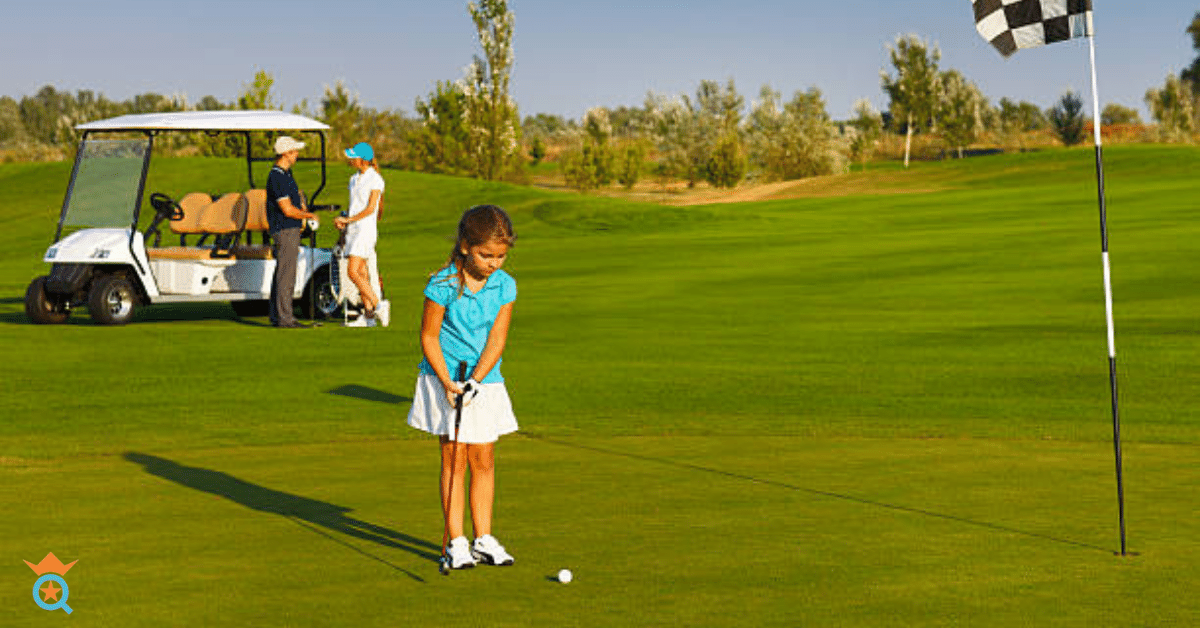Golf fitness plays a crucial role in the development of junior golfers, significantly improving their overall performance, strength, and flexibility. By incorporating the right exercises into their training routines, these young athletes can effectively develop fundamental movement skills for executing complete and accurate golf swings.
A well-rounded fitness program enhances golf posture, vital for maintaining balance and control during the swing, and increases swing speed, allowing junior golfers to generate more power and distance.
By emphasizing golf-specific exercises and a balanced fitness approach, junior golfers can build a strong foundation that will positively impact their game and overall physical abilities as they grow and mature in the sport.

Specializing Too Early: The Impact on Junior Golfers
Specializing too early in golf, or any sport, can harm a junior athlete's overall development. Focusing solely on one sport at a young age increases the risk of overuse injuries, as repetitive strain on specific muscle groups and joints can lead to imbalances and weaknesses.
Furthermore, early specialization can result in burnout and diminished enjoyment, causing talented young athletes to abandon their sport prematurely. Junior golfers must incorporate diverse physical activities and exercises into their training routines to prevent these adverse consequences and promote well-rounded development.
Engaging in various sports and activities not only helps build essential fundamental movement skills but also contributes to maintaining long-term motivation and enjoyment in their chosen sport.

Core Stability and Upper Body Strength
Core stability and upper body strength are critical components of a golfer's physical fitness, contributing significantly to a robust and efficient golf swing. By developing these areas, junior golfers can achieve better control, balance, and power transfer throughout their swing.
The Hip Raise on Exercise Ball and Planks are two excellent exercises that focus on building core stability and upper body strength.
Hip Raise on Exercise Ball
The Hip Raise on Exercise Ball is effective for improving core stability and hip muscle strength, ultimately enhancing shockwave absorption during a golf swing. To perform this exercise, follow these steps:
- Lie flat on your back while positioning your calves on an exercise ball.
- Tighten your glutes and lift your hips upward from the ground.
- Bend your knees, drawing the ball closer to your body.
- Extend your legs, pushing the ball back to its initial position.
- Gently lower your body to the floor once again.
Repeat this exercise for three sets of 10-15 reps, focusing on maintaining proper form and engaging your core muscles throughout the movement.
Planks and Plank Variations
Planks and their variations are excellent exercises for building core strength and maintaining balance and stability during a golf swing. Some plank variations to consider include the following:
- Standard Plank: Rest on your forearms with your elbows directly below your shoulders and maintain a straight line from your head to your heels.
- Side Plank: Position yourself on your side, resting on one forearm with your body in a straight line, and hold.
- Extended Arm Plank: Perform a standard plank with your arms fully extended and your hands on the ground.
Juniors should begin with shorter plank durations, such as 5-10 seconds, and gradually progress to holding planks for a minute or more as their core strength improves. By incorporating these plank variations into their training routines, junior golfers can develop a solid and stable core, leading to better performance on the golf course.

Lower Body Strength and Balance
Building upon the foundation of core stability and upper body strength, paying attention to the importance of lower body strength and balance in golf is essential. A strong and stable lower body contributes to maintaining proper golf posture and generating power in the swing.
Exercises like the Golfers' Air Squat, Pistol Squat, and Stability Ball Kneeling can help junior golfers develop these vital skills.
Golfers' Air Squat
The Golfers' Air Squat is an excellent exercise for strengthening the legs and building endurance, which is crucial for a powerful golf swing. This exercise has a unique form compared to a regular squat, more closely mimicking the balancing requirements of a golf swing. To perform the Golfers' Air Squat, follow these steps:
Position yourself with feet shoulder-width apart and maintain a golfer's address posture.
- Raise your hands to your face, placing them at the sides of your head.
- Direct your elbows in a forward manner.
- Controlled and steadily, bend your knees to a 90-degree angle (avoid going further down).
- Maintain your spine's golf posture and keep your arms in their current position.
- Resume the initial stance.
Perform this exercise in 3 sets, with 10-12 repetitions per set.
Pistol Squat
The Pistol Squat is an effective exercise for developing lower body strength and balance, essential for a stable and powerful golf swing. To perform the Pistol Squat with proper form and execution, follow these steps:
- Stand on one leg with the other extended straight in front of you.
- Slowly lower your body while maintaining balance and keeping your extended leg off the ground.
- Push through your heel to return to the beginning position once you've reached the bottom of the squat.
Repeat this exercise for three sets of 8-10 reps per leg, focusing on maintaining balance and proper form throughout the movement.
Stability Ball (Swiss Ball or Physio Ball) Kneeling
The Stability Ball Kneeling exercise is advanced for developing balance, vital for a controlled golf swing. To perform this exercise, follow these tips:
- Begin by kneeling on a soft surface with a stability ball nearby.
- Carefully position yourself on the stability ball, maintaining your balance as you do so.
- Aim to stay on the stability ball for 20-30 seconds, gradually increasing your time as your credit improves.
If beginners find this exercise too challenging, they can start by kneeling on a Bosu Ball before progressing to a stability ball. By incorporating these lower body strength and balance exercises into their training routines, junior golfers can develop a solid foundation for improved golf performance.

Rotational Power and Flexibility
Continuing from the focus on lower body strength and balance, addressing the importance of rotational power and flexibility in golf is crucial. A well-controlled golf swing relies on generating power through rotation while maintaining flexibility.
The Side Twist with Resistance Bands, Golfers' Twist, and Golf Club Twist exercises are excellent for developing these skills.
Side Twist with Resistance Bands
The Side Twist with Resistance Bands exercise strengthens core muscles and maintains flexibility throughout the golf swing. To perform this exercise, follow these steps:
- Position yourself with feet set shoulder-width apart.
- Secure bi-lateral resistance bands to a fixed point and hold the handles.
- Move backward to generate resistance in the bars.
- With a controlled movement, shift both hands to one side, rotating your torso as if executing a golf swing.
- Resume the initial stance and perform the exercise on the other side.
Perform three sets of 10-12 rotations per side, focusing on engaging your core muscles and maintaining a smooth, controlled motion.
Golfers' Twist
The Golfers' Twist exercise is intended to improve the balance and form required for a controlled golf swing. To perform this exercise with proper form and execution, follow these steps:
- Position yourself with your feet close together.
- Fold your arms across your chest, touching your shoulders.
- Slightly bend your knees and lean forward a little.
- Rotate your torso from side to side in a controlled manner, ensuring stability throughout the movement.
Perform three sets of 10 rotations per side, maintaining balance and control throughout the movement.
Golf Club Twist
The Golf Club Twist exercise is excellent for enhancing balance and flexibility in your golf swing. To perform this exercise correctly, follow these step-by-step instructions:
- Position yourself with feet set slightly wider than shoulder-width apart.
- Hold your golf club with both hands, one at the top of the grip and the other near the clubhead. Keep the club at stomach level in front of you.
- With a controlled movement, swing the club to one side, executing ten repetitions.
- Resume the initial stance and perform the same action on the opposite side with ten reps.
By incorporating these rotational power and flexibility exercises into their training routines, junior golfers can develop the skills needed for a powerful and well-controlled golf swing.

Fun and Engaging Exercises for Kids: V-sits and Medicine Ball Drills
Incorporating fun and engaging exercises into a junior golfer's training routine is essential for maintaining their interest and motivation. By introducing enjoyable activities like V-sits and medicine ball drills, kids can develop their skills while having a good time, either individually or in a group setting.
These exercises improve golf-specific skills and contribute to overall physical fitness and athleticism.
V-sits
V-sits are a fantastic exercise for building core strength and rotation while keeping things fun and challenging. To perform V-sits, follow these steps:
- Sit on the ground with your legs extended in front of you.
- Lean back slightly, keeping your back straight.
- Engage your core and lift your legs off the ground, forming a V-shape with your body.
- Hold this position for a few seconds before lowering your legs back down.
For beginners, it may be challenging to keep the feet off the floor; start with feet on the ground and progress to keeping them elevated as strength increases.
To make the exercise more engaging, incorporate a light medicine ball, rotating to touch the ball on each side of the body.
Medicine Ball Drills
Medicine ball drills are a versatile and enjoyable way for junior golfers to develop power, balance, and coordination. Here are a few medicine ball exercises that can be incorporated into their training routine:
- Medicine Ball Slams: Stand with your feet shoulder-width apart, holding a medicine ball above your head. Slam the ball down to the ground, engaging your core and using your entire body. Catch the ball as it bounces back up and repeat the process.
- Medicine Ball Russian Twists: Sit on the ground with your knees bent and feet flat on the floor. Hold a medicine ball with both hands and twist your torso to the left, touching the ball to the ground next to your left hip. Then, turn your torso to the right, touching the ball to the floor next to your right hip. Repeat the process, focusing on engaging your core throughout the movement.
- Medicine Ball Chest Pass: Stand facing a partner or a wall, holding a medicine ball with both hands at chest level. Engage your core and use your chest and arms to push the ball forward, passing it to your partner or bouncing it off the wall. Catch the ball as it returns and repeat the process.
By incorporating these fun and engaging exercises into their training routines, junior golfers can develop essential skills while staying motivated and enjoying their time on and off the golf course.
The Bottom Line
A well-rounded fitness routine is paramount for junior golfers, as it lays the foundation for their long-term success and development. Junior golfers can effectively enhance their overall performance and reduce the risk of injury by focusing on exercises that target core stability, upper and lower body strength, balance, rotational power, flexibility, and fundamental movement skills.
Encouraging athletes, coaches, and parents to prioritize diverse and engaging exercises is essential, ensuring that young golfers remain motivated and enjoy their training sessions.
A fun and holistic approach to golf fitness contributes to the development of skilled and resilient golfers. It fosters a lifelong love for the sport and an appreciation for the value of physical fitness in all aspects of life.








